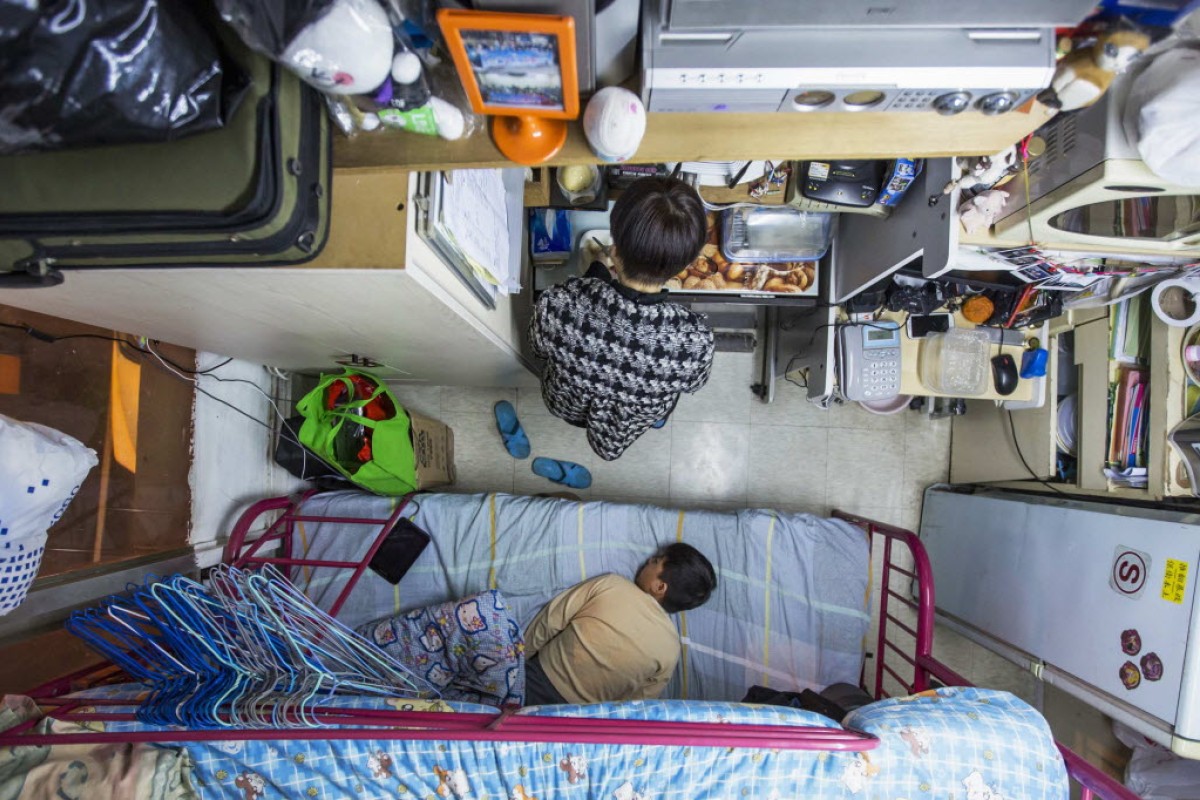 Sky-high property prices mean many people can only afford to live in tiny homes
Sky-high property prices mean many people can only afford to live in tiny homesThe number of impoverished Hongkongers hit a record high last year, with one in five people living below the poverty line, the latest official figures revealed today.
The new statistics sparked questions from lawmakers and social workers over the effectiveness of the government’s poverty-alleviation measures. They said the latest figures again proved that the needy could not benefit from the city’s economic growth.
But Chief Secretary Matthew Cheung Kin-chung insisted that government efforts to combat poverty had been useful, while admitting there was “not much room” for the poverty rate to drop significantly in face of a rapidly ageing population.
“The structural problem of the ageing population is irreversible – it is a phenomenon. Tens of thousands of residents will fall into the elderly category every year ... You can imagine this has nullified the [poverty alleviation effect] brought about through government intervention,” Cheung said as he unveiled the administration’s annual report. “It is a huge challenge.”
The increasing number of smaller households had also constantly pushed up the poverty rate, he added.
The Hong Kong Poverty Situation report for 2016 showed that 1.35 million of the city’s 7.35 million residents were living below the official poverty line, 7,000 more than the figure in 2015. The poverty rate rose 0.2 percentage points to 19.9 per cent.
Some 478,000 of the poor are elderly residents, 19,000 more than a year earlier.
Hong Kong only began measuring poverty in 2009. Last year’s figures are the highest in terms of absolute numbers.
The city’s poverty line is drawn at half the median monthly household income according to household size. Those living below the line are considered poor.
The poverty lines for all household sizes rose in 2016. For single people, it was HK$4,000, HK$9,000 for a two-person household and HK$15,000 for three people.
After taking the government’s cash interventions into account – such as Comprehensive Social Security Assistance and the Old Age Living Allowance – the number of impoverished Hongkongers fell to 996,000, which is 25,000 more than in 2015.
This brought the poverty rate for 2016 to 14.7 per cent, but it was still 0.4 percentage points higher than the 2015 figure.
In-depth analysis showed that 200,700 households were “working poor”, but the poverty rate for working households remained at a record low of 11.5 per cent.
Sham Shui Po in Kowloon remained the poorest district in Hong Kong, with 24.6 per cent of its residents falling below the poverty line. Kwun Tong came next with 24.3 per cent, followed by Kwai Tsing, with a poverty rate of 24.1 per cent. But after factoring in government intervention, North district surpassed Sham Shui Po as the city’s poorest.
The Society for Community Organisation – a non-governmental group supporting the disadvantaged – slammed the government for not diong enough to alleviate poverty, urging it to expand the Old Age Living Allowance scheme to prevent the elderly from falling into poverty once they retire.
“The government should also put forward measures to facilitate the employment of senior citizens, such as legislating against age discrimination and introducing flexible working hours for the elderly,” the group said.
Labour Party lawmaker Fernando Cheung Chiu-hung called on the administration to introduce a universal pension scheme and review the statutory minimum wage – which stands at HK$34.50 an hour – every year instead of every two years.
